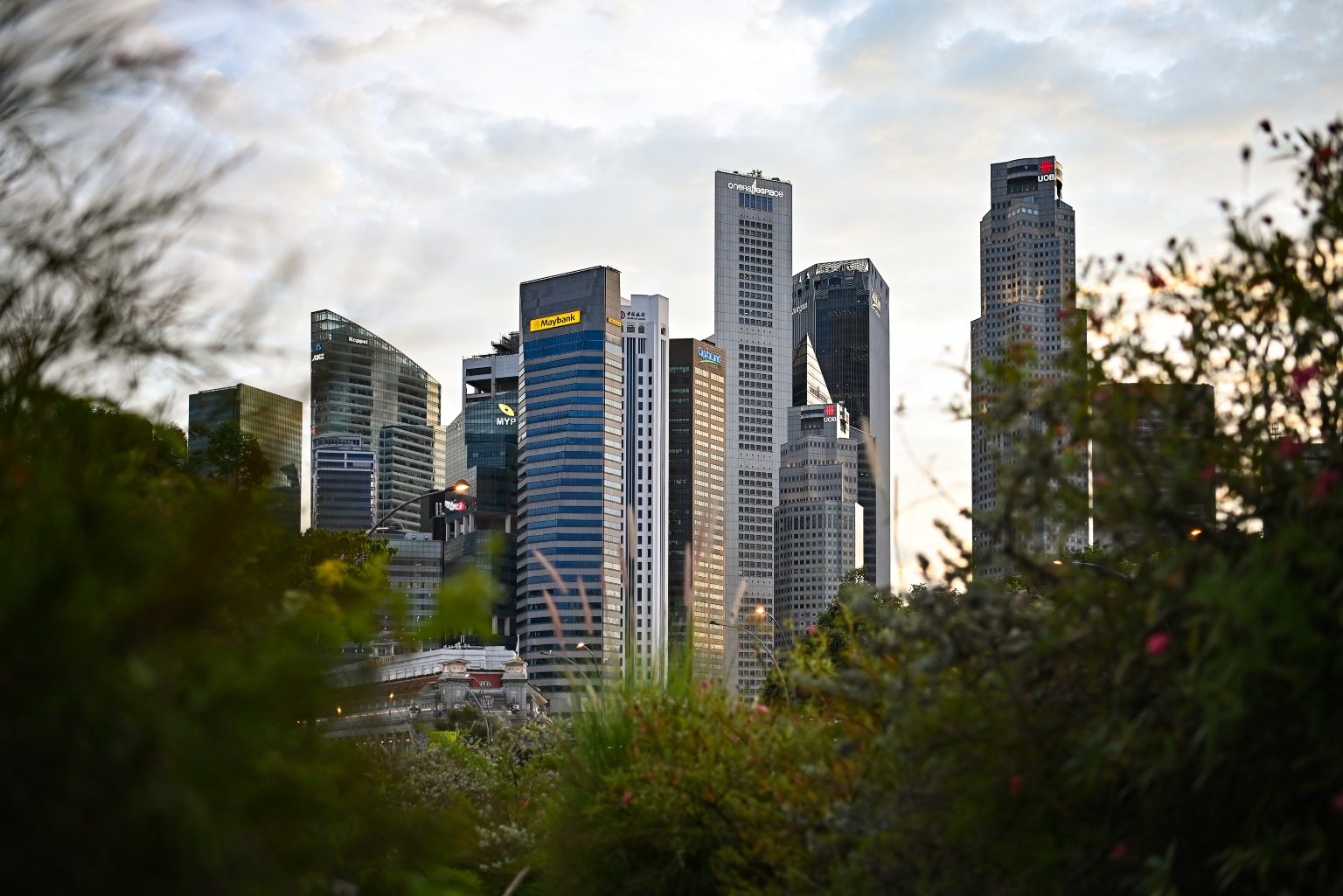Singapore's growth outlook for 2022 dented but not derailed by war in Ukraine: MAS
Sign up now: Get ST's newsletters delivered to your inbox

MAS has maintained its forecast for the Singapore economy to grow by between 3 per cent and 5 per cent this year.
ST PHOTO: LIM YAOHUI
Follow topic:
SINGAPORE - The mayhem caused by the war in Ukraine has dented trade-dependent Singapore's growth outlook, but the Republic's major easing of Covid-19 curbs will allow the domestic economy to pick up some of the slack, the Monetary Authority of Singapore (MAS) said on Thursday (April 28).
MAS, hence, maintained its forecast for the Singapore economy to grow by between 3 per cent and 5 per cent this year, barring further disruptions caused by the Ukraine war or a severe worsening of the pandemic.
"The projected growth outcome represents a moderation from the 7.6 per cent expansion in 2021, but would still be above trend for the second consecutive year," MAS said in its biannual macroeconomic review report.
The central bank said Russia's invasion of Ukraine has mainly hit supplies of commodities such as food grains, oil and gas, and industrial metals - stoking inflation worldwide.
"Supply shocks arising from the Russia-Ukraine conflict have introduced renewed uncertainties surrounding the outlook for the rest of the year, at a time when global supply chain frictions arising from the pandemic have yet to be fully resolved."
MAS said the supply-driven price shocks are eroding real incomes and could depress demand for goods and services, and investment flows.
For instance, the Business Optimism Index compiled by the Singapore Commercial Credit Bureau dipped slightly in the second quarter of 2022 to 5.35 percentage points, from 5.91 in the previous quarter, primarily due to the geopolitical uncertainty from the war in Ukraine exacerbating risks of global supply chain disruptions.
Also, inflation in Singapore spiked to a 10-year high in March, resulting in an aggressive tightening of monetary policy by the MAS earlier this month to cap the surge in prices.
However, MAS' confidence that the economy remains on track to grow by 3 per cent to 5 per cent, as projected by the Ministry of Trade and Industry, comes from Singapore's resolve to live with Covid-19.
The policy led to a major easing of domestic safe management measures and border restrictions at the end of March, boosting hopes of a revival of Singapore's retail and travel-related industries.
"Reduced restrictions will bring forward the projected recovery in the domestic-oriented and travel-related sectors to the second quarter, earlier than the previous expectation of the second half of this year," MAS said.
"The drivers of growth should broaden to the domestic-oriented and travel-related clusters over the course of this year. Accordingly, sectors which bore the brunt of the pandemic are projected to stage a more decisive recovery and contribute more significantly to gross domestic product growth in 2022 compared with last year," MAS added.
Still, higher input costs could curtail manufacturing here, while high inflation and weaker confidence could also restrain domestic consumption and investment, MAS warned.
Consumer prices in Singapore saw a spike last month on the back of higher food, services and private transport costs.
MAS said it expects core inflation to pick up sharply in the coming months, but moderate in late 2022, "reflecting in part some stabilisation of commodity prices and possible easing of supply constraints".
At its monetary policy review two weeks ago, MAS had raised its inflation forecast for the year. It now expects core inflation to come in at 2.5 per cent to 3.5 per cent, up from the 2 per cent to 3 per cent expected in January. Overall inflation is forecast at 4.5 per cent to 5.5 per cent, from the earlier range of 2.5 per cent to 3.5 per cent.
The authority in April also tightened its monetary policy for the third time since October - in a move to curb imported inflation.
On the war in Ukraine, MAS said the fallout will hit most of Singapore's external-oriented sector but the key electronics sector has shown some resilience.
MAS said that unlike the petrochemical and transport industries, the semiconductor sector's reliance on oil or energy is smaller.
Instead, the exposure of the semiconductor industry to Russia and Ukraine comes from their role as major suppliers of two crucial inputs - Russia produces 37 per cent of the global supply of palladium and Ukraine supplies 70 per cent of neon.
However, Singapore imports palladium mainly from Britain and the United States, rather than Russia, although some of Singapore's palladium suppliers may themselves be importing from Russia, MAS said.
"In general, the constricted global supply of resources implies that future purchases would possibly need to be secured at higher unit prices," it added.
Major global chip companies such as Micron, UMC and GlobalFoundries, which have a production presence in Singapore, have thus far indicated limited disruptions as they have stockpiled raw materials and diversified sourcing since Russia's annexation of Crimea in 2014.
However, given that the global information technology industry is in its third year of expansion, a longer upturn than previous cycles, global chip sales growth is expected to moderate in the coming quarters from the rapid pace in 2021, MAS said.
Overall, growth in Singapore's major trading partners is not expected to be derailed. "Demand in the advanced economies should stay well-supported by the buffer provided by household savings and wealth accumulated during the pandemic," MAS said.

